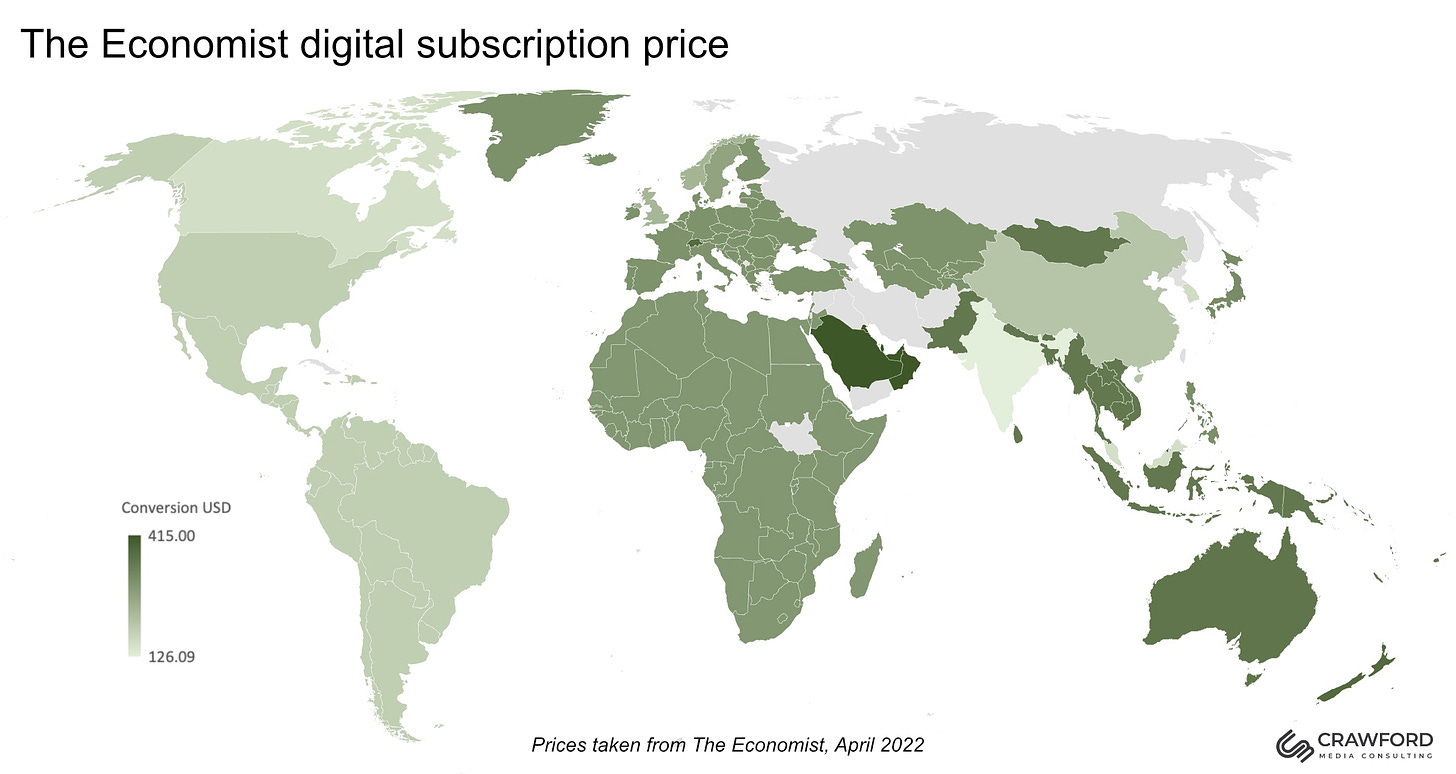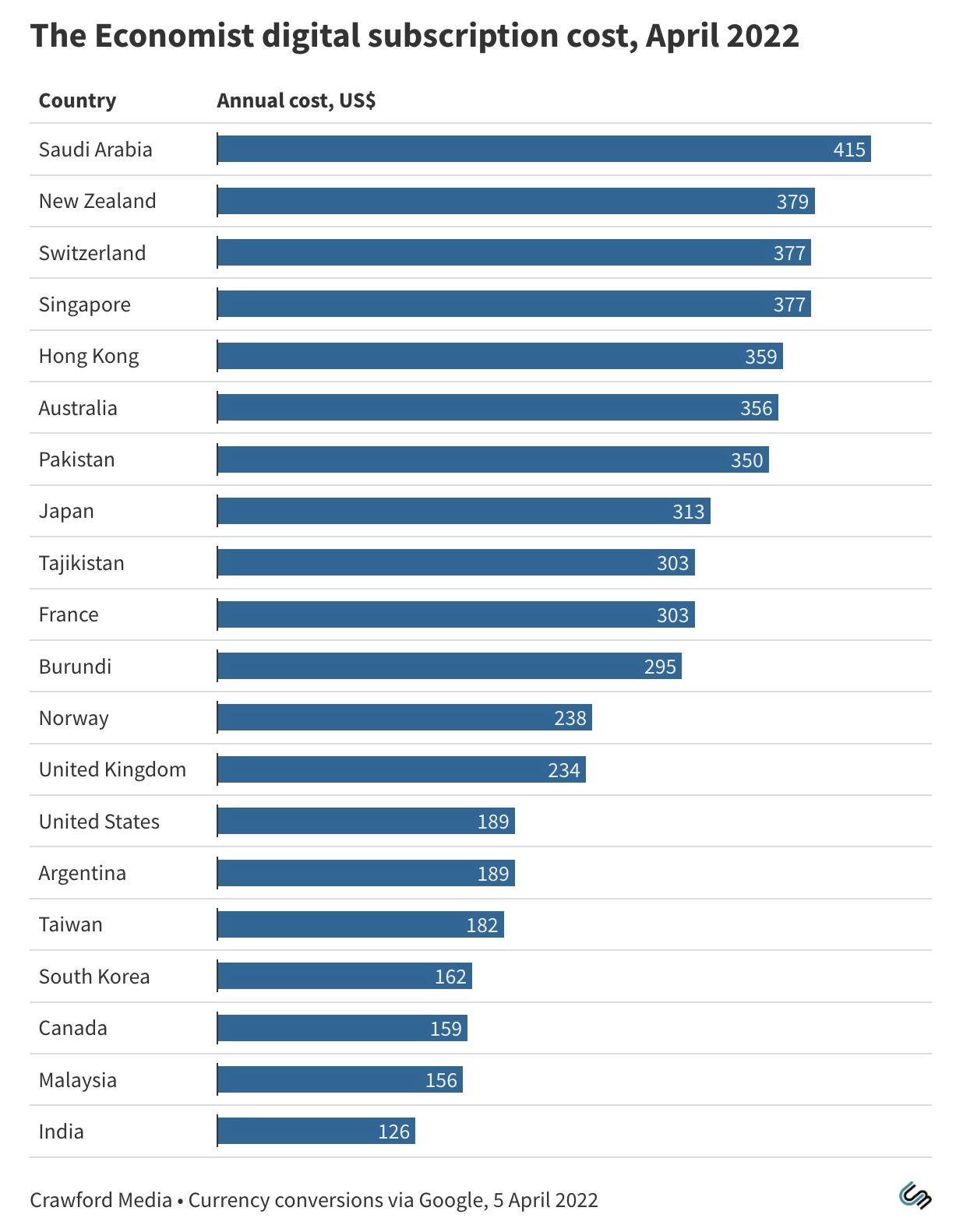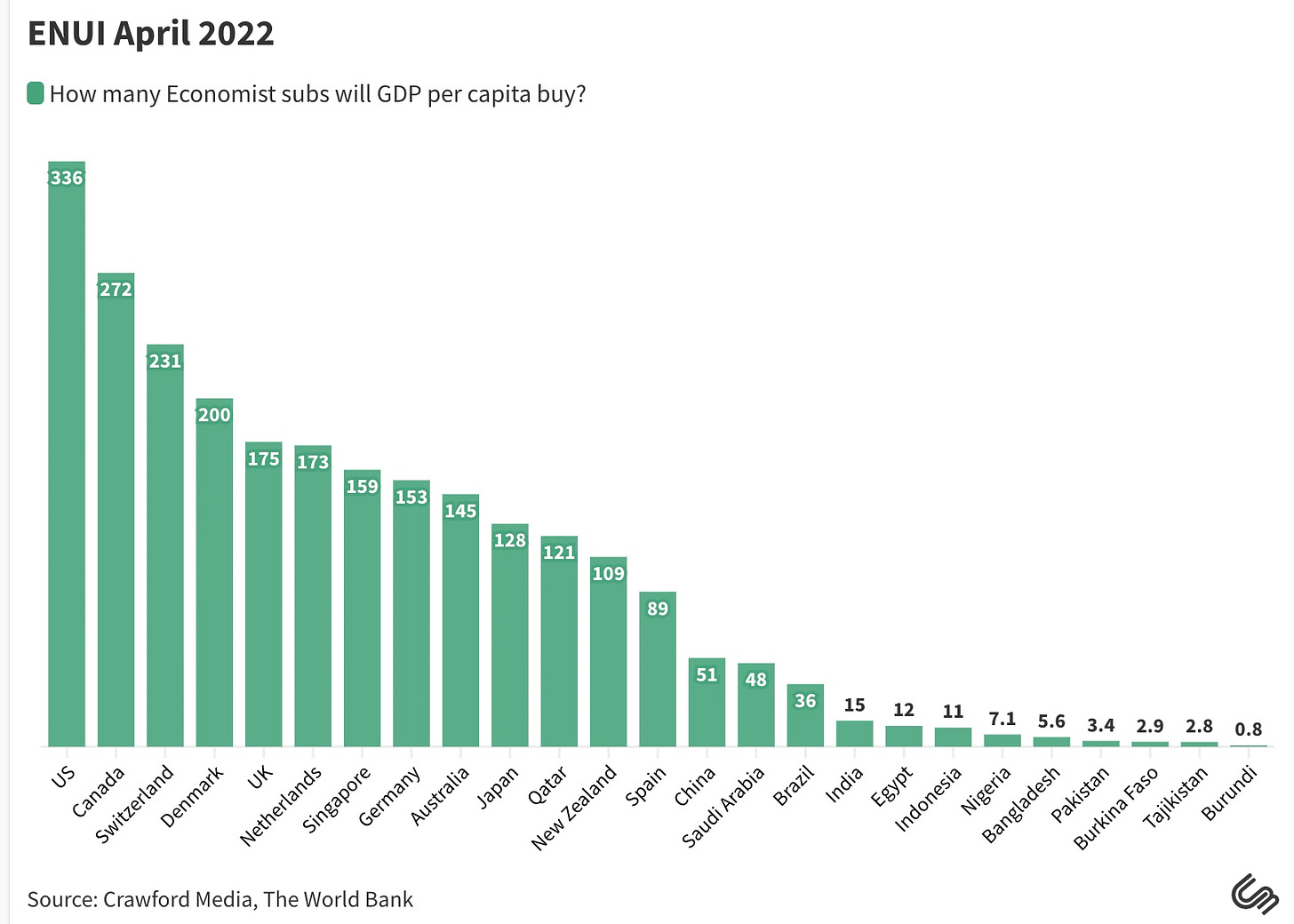Today I am “doing an Economist” on The Economist, with an investigation into the august publication’s global pricing for digital content. The same kind of analysis that has seen The Economist rank nations by the cost of Big Mac burgers shows that publication itself varies by more than 300% between the cheapest and most expensive annual digital subscriptions. For exactly the same product, delivered digitally.
At the top end of town are Australia and New Zealand, both in a group of 14 countries consisting mostly of Arab kingdoms and European tax havens. New Zealand has the distinction of being the most expensive nation in the world to buy an Economist subscription after the oil-rich nations of the Persian Gulf.
Why are you doing this?
My mate Dave alerted me to the fact that you can take out a digital subscription to The Economist for US$189, if you happen to live in the US. I checked what I was paying, and discovered that for no reason I could discern it was costing me twice as much.
I started clicking on the wonderfully democratic drop-down “region” menu, picking out Economist digital subscription prices at random, and found that the US discount applied to all nations in the Americas, north and south, except Canada, where The Economist was even cheaper.
I became somewhat fixated, and improved my system of data collection. The map below shows every nation The Economist will sell to, and the digital newspaper’s relative expensiveness in those markets. Deeper green is dearer.

The map doesn’t quite do justice to the variation in cost. In the table below, which contains a representative selection of countries only, you can see these big differences more clearly.

Getting to the bottom of it
Despite the subheading, I don’t think there is any really good explanation behind most of The Economist’s digital pricing. Certainly there are global tiers, with mostly uniform approaches to the rich Middle East, Asia, the Eurozone, Africa, and the Americas. But the reason for the tiers themselves isn’t obvious – is it more expensive to serve content to Africa than South America? – and beyond that, there are many odd exceptions. The invisible hand has never been more inscrutable.
India is the cheapest place in the world to be an Economist fan. If you happen to live next door in Pakistan, you’re out of luck: the same digital access will cost you almost three times as much. A possible difference lies in whether you are allowed to pay in local currency or not (Pakistanis have to use US$, while Indians can pay in rupees), but having a local Economist currency edition does not predict lower price. Far from it. New Zealanders get to pay in NZ dollars but are paying through the nose. For some reason, Canadians, who must also pay in local currency, get a 138% discount compared to Kiwis. The extent of these price variations cannot be explained by international currency movements.
Economist Newspaper Unaffordability Index
I took the liberty of creating my own “Big Mac” index, only this one has nothing to do with currency valuation. The ENUI (“Economist Newspaper Unaffordability Index”, pronounced “ennui” after the dispriting meanderings of my search for meaning within The Economist’s sales department) compares per capita GDP to the absolute cost of the digital publication to give a relative affordability number. I can’t say I was hopeful the ENUI would shine a light. It is clear that any price list with NZ near the top and the US near the bottom cannot be explained by reference to per capita productivity. But perhaps some pattern would emerge.

For the above ENUI graph, I’ve chosen the world’s most populous nations, plus a selection of countries that I find interesting or extreme. I have excluded several small tax-havens (under 1 million population) from consideration.
In the world’s poorest nation, Burundi, annual per capita GDP will not buy you a single subscription. In the US, you can buy 336 with some change left over. The ENUI tells us far more about global economic power than The Economist’s pricing. The madcap decisions at sales HQ are pretty much flooded out here by massive differences in productivity around the globe.
Economist, explain yourself
The Economist’s subscriptions team replied to my query about pricing variation with the comment that “prices with [sic] change between each country.”
This is not a good answer, even if you correct the typo and make it comprehensible. As free market rationalists, I would expect the thinkers at The Economist to have some kind of “supply and demand” explanation to hand. Or they could just go with the truth, for example: “It just happened that way and you keep paying it, so there’s no need to discount.” Interesting how real-world pricing seems so divorced from theory.
The Economist has been my favourite publication for several years. I have my go-to news publications, and out of all of them The Economist is the one I go to most regularly. I approach it with the anticipation of finding out something I didn’t know.
Whatever that makes me, I’m happy to embrace it.
You are probably familiar with the monkey justice experiments. In the 2003 Nature paper “Monkeys Reject Unequal Pay”, researchers noted that monkeys who had been previously happy with cucumber rewards became enraged when they saw other monkeys receiving more desirable grapes for the same tasks. They were so mad they threw those tasty cucumbers out of the cages. They took a hit for justice.
I’m starting to feel like a cucumber monkey here. It all comes back to that bloody drop-down menu: I can see the other cages and I’m not happy anymore.
And no, it doesn’t really matter
